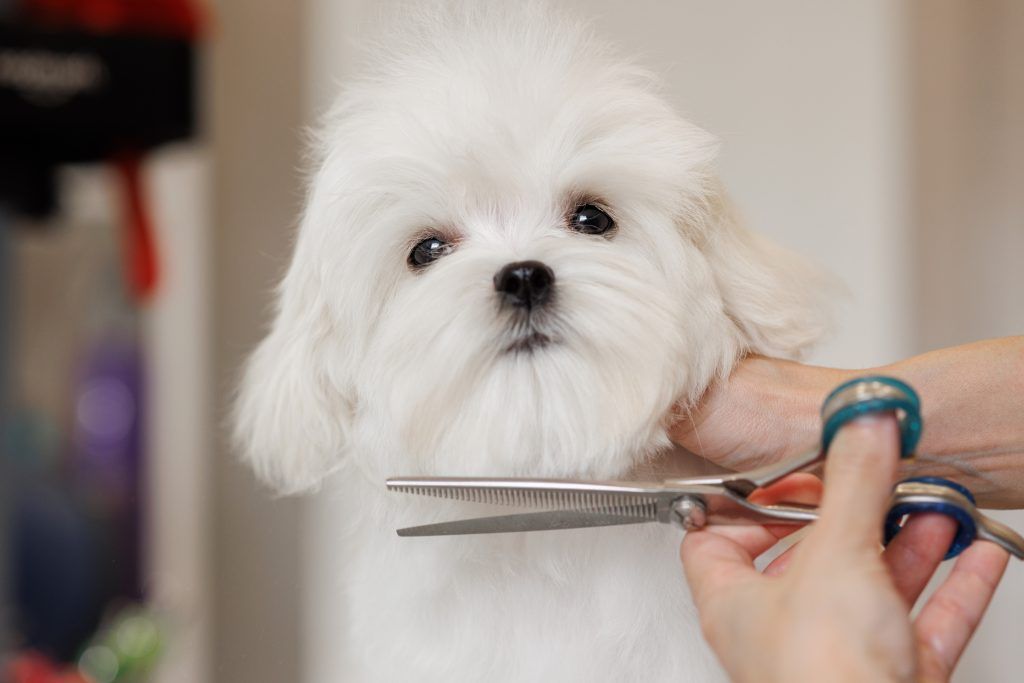Small dogs can be a point of major contention in the pet world. Some people love their small size, mobility, and loving nature. On the other hand, others think they are too yappy and aggressive compared to “gentle giant” breeds such as Great Danes.
The choice is yours regarding what type of dogs you like the most. One unique thing about specific small dog breeds is the history that lies within them. Due to their long and deliberate descent from wild dogs to lap companions, the story of small dog breeding is an interesting one.
Today, we will discuss some basics about Maltese dogs and give an overview of their very long history!
The Maltese Breed
Commonly referred to as “tiny dogs” or “lap dogs,” Maltese are small dogs that many pet owners love. They are specifically known for having super silky white hair that can be kept short or grown extremely long, much like Shih-Tzus.
Though they are now categorized as a “toy dog”, Nicholas Cutillo, author of “The Complete Maltese”, believes they may have originally descended from an ancient spitz-type dog.
In terms of temperament, these dogs are very energetic and lively, always looking forward to a little playtime. With this, their high energy can sometimes take the best of them, manifesting in behaviors such as anxiety or barking.
As will be discussed, the Maltese breed is extremely old, and has been standardized, with many organizations and societies devoted to keeping these standards in place to this day!

Photo Credit: Shutterstock
History of the Maltese Dog Breed
Like many ancient things, the history of the Maltese breed has some mystery and speculation surrounding it. Although we have a good idea of where they originated and what societies bred them, some unknowns are still related to their story.
Ancient Origins
One thing that is agreed upon in terms of the breed origin is that it is old. The famous naturalist Charles Darwin hypothesized that it can be traced as far back as 6,000 B.C.!
The earliest record of the breed was found on a Greek amphora (jar) that had images of the dog with the word Μελιταιε (Melitaie) inscribed on it. This jar was later dated to around 500 B.C., although mentions of the breed can also be seen in earlier Greek literature, art, and products. For instance, small children’s toys have also been found with images of Maltese-like dogs on them, dating back to around 8000 B.C. This finding could serve to place the breed’s origin even earlier in human history!
The Island of Malta – Ancient History
Referred to as “ye ancient dog of Malta,” this breed originates near the Mediterranean island of its namesake. Malta is an island that lies around 60 miles south of Sicily, Italy. Although it may seem like a strangely small place for such a popular breed to have originated there, it does have great historical significance. In the 3000s B.C., Malta was the center of the Mediterranean, acting as a major trade and cultural location for all of the surrounding civilizations to visit and flock to.
During this time, many goods, ranging from weapons to food to animals, were transported to and through the island. It is thought that the Phoenicians were the ones who brought Maltese dogs throughout the Mediterranean initially. With that said, something is believed to have happened in the introduction that tied them to Malta, which explains the origins of their modern name!

Photo Credit: Shutterstock
Eventually, the breed took hold in society as time went on. Specifically, in Greece, big thinkers like Aristotle were even taken by the dog’s cuteness. Throughout the time of the Greeks and the Romans, the dog was a popular cultural symbol, adored and cared for by many.
After the fall of Rome, China was the next place where the breed would pay a visit. After their introduction to Asia, Maltese dogs were coveted by many societies in the region. For instance, Chinese breeders sought to preserve the breed and even altered it slightly by making deliberate crosses with traditional Eastern breeds. This Chinese rule over the breed lasted until roughly the end of the Medieval Period in Europe.
Modern History of the Maltese Breed
In addition to these more reputable timelines concerning Maltese dogs, many folk stories revolve around the breed. For instance, it is said that in the Renaissance they were known as “comfort dogs”, and essentially used as mobile heating pads. The breed was even owned by famous world leaders such as Marie Antoinette and Mary, Queen of Scots!
According to a famous legend, when Mary, Queen of Scots, was executed, her Maltese dog hid under her skirt. Later, it was found covered in her blood from the execution, and refused to leave her side; a true testament to the breed’s loyalty!
Moving towards more recent history, Napoleon was another recent world leader who was connected to the breed. Many sources cite that when he conquered Malta, the first action he took was to find the two best-looking Maltese dogs to send back to his wife as a gift. The breed was first exhibited in the West at the first Westminster Dog Show in 1877, where it was marketed under the name “Maltese Lion Dog”.
Now, the Maltese is considered to have been the world’s first “fad” dog, beloved for its popularity and infamous history. Whether some of these stories are true or false, one thing remains clear: something about the Maltese breed is charming enough that the breed has maintained an adored spot in the public eye throughout the majority of human history!
























